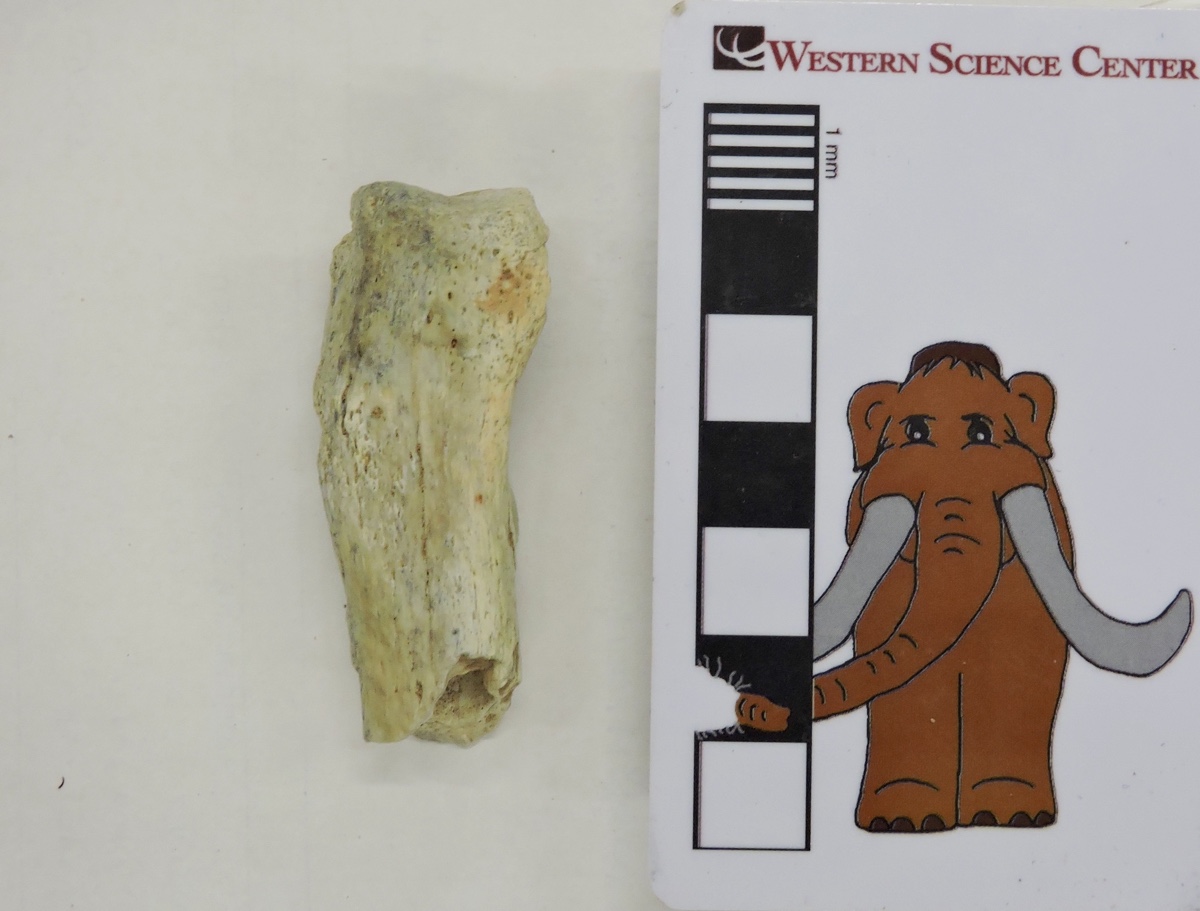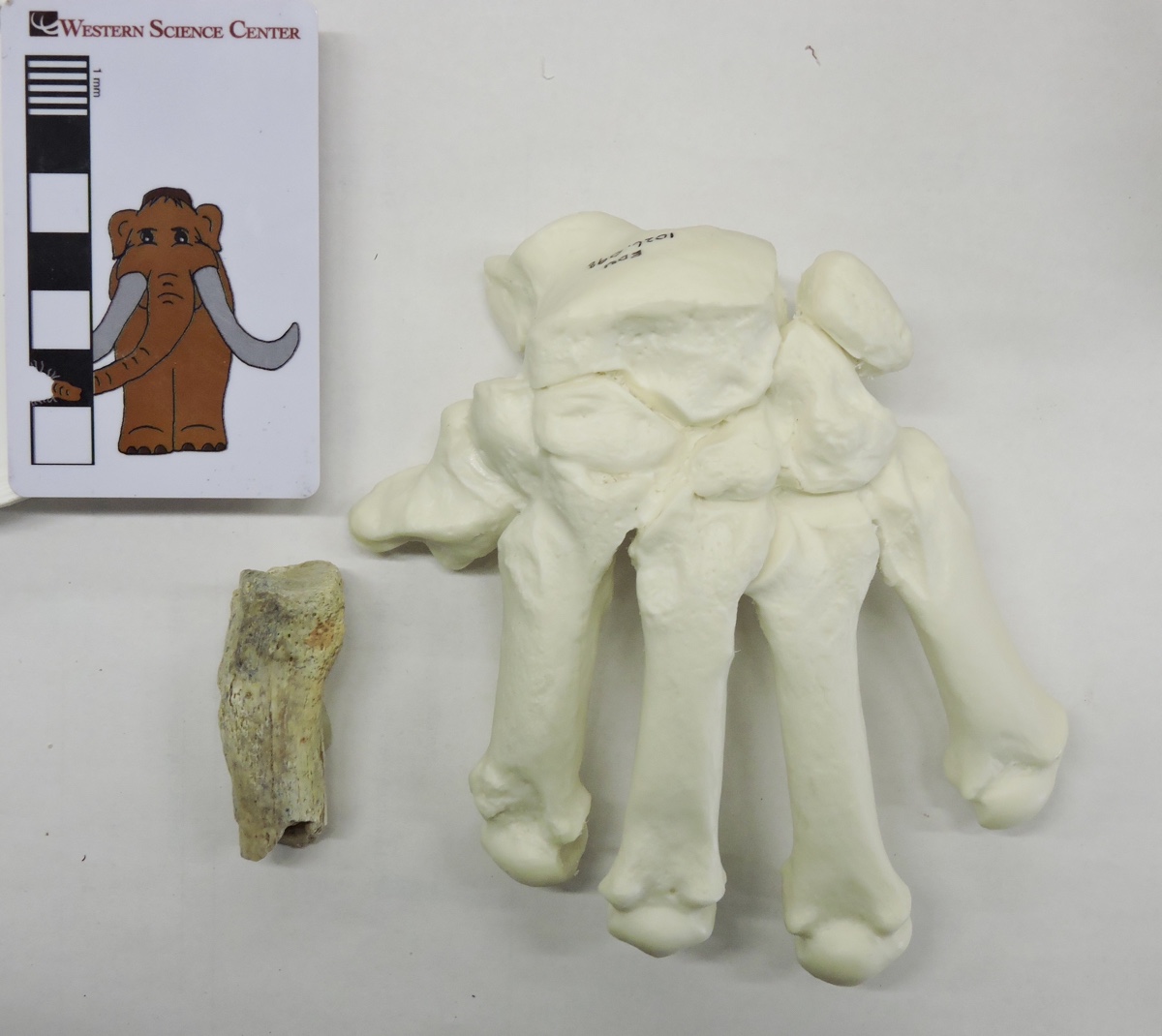 Part of the nature of paleontology is attempting to pull as much information as possible out of often very limited data. As I mentioned last week, many fossil specimens may not be especially visually compelling, but nevertheless can provide useful information.A few weeks ago I discussed a bighorn sheep bone from a small collection of fossils recovered from Bureau of Land Management property near Desert Center in Riverside County. A number of other species were found at this site, with one of the most surprising being the sabertooth cat Smilodon.The only identifiable fragment from Smilodon that was found was the partial left second metacarpal (the hand bone that supports the index finger) shown above. It happens that at WSC we have a cast skeleton of Smilodon that we use for programming that allows us to place it in context:
Part of the nature of paleontology is attempting to pull as much information as possible out of often very limited data. As I mentioned last week, many fossil specimens may not be especially visually compelling, but nevertheless can provide useful information.A few weeks ago I discussed a bighorn sheep bone from a small collection of fossils recovered from Bureau of Land Management property near Desert Center in Riverside County. A number of other species were found at this site, with one of the most surprising being the sabertooth cat Smilodon.The only identifiable fragment from Smilodon that was found was the partial left second metacarpal (the hand bone that supports the index finger) shown above. It happens that at WSC we have a cast skeleton of Smilodon that we use for programming that allows us to place it in context: Here's a marked-up version, with the approximate preserved portion of the metacarpal indicated:
Here's a marked-up version, with the approximate preserved portion of the metacarpal indicated: So all we have is the proximal half of the bone, and even that is damaged. Nevertheless, the size and shape make this a pretty solid identification. The interesting thing is that this is the only reported Smilodon bone from the entire region around Desert Center, and in fact is the only record of any large Pleistocene cat from this area (Raum et al. 2014). So this tiny fragment turns out to be a relatively significant specimen for what it can potentially tell us about the range of Smilodon and the Pleistocene ecosystem in the Desert Center region.Reference: Raum, J., Aron, G. L., and Reynolds, R. E., 2014. Vertebrate fossils from Desert Center, Chuckwalla Valley, California. In R. E. Reynolds (Ed.), Not a Drop Left to Drink, California State University Desert Studies Center 2014 Desert Symposium: 68-70.
So all we have is the proximal half of the bone, and even that is damaged. Nevertheless, the size and shape make this a pretty solid identification. The interesting thing is that this is the only reported Smilodon bone from the entire region around Desert Center, and in fact is the only record of any large Pleistocene cat from this area (Raum et al. 2014). So this tiny fragment turns out to be a relatively significant specimen for what it can potentially tell us about the range of Smilodon and the Pleistocene ecosystem in the Desert Center region.Reference: Raum, J., Aron, G. L., and Reynolds, R. E., 2014. Vertebrate fossils from Desert Center, Chuckwalla Valley, California. In R. E. Reynolds (Ed.), Not a Drop Left to Drink, California State University Desert Studies Center 2014 Desert Symposium: 68-70.
